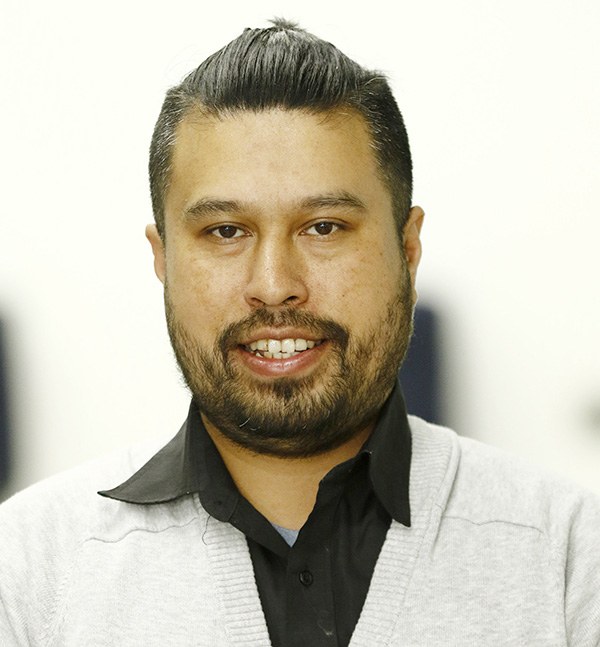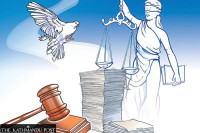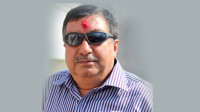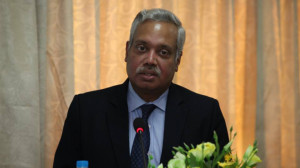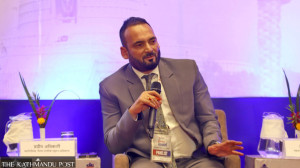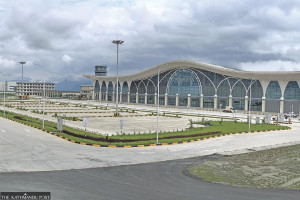Ultra-runner Mira Rai has been named National Geographic People's Choice Adventurer of the Year. Rai is the brand promoter of ekantipur.com, official website of Kantipur Publications.
Rai, along with ten other adventurers, had been nominated for NatGeo's annual list that selects adventurers for their extraordinary achievement in exploration, adventure sports, conservation, or humanitarianism.
Other adventurers include, Park Protectors Pete McBride and Kevin Fedarko, Rock Climber Ashima Shiraishi, Cave Diver Krzysztof Starnawski, Celestial Circumnavigators Hōkūle‘a Team, Ocean Advocate Shannon Switzer Swanson, Kayaker Semit Lee, Paraglider Antoine Girard, Wilderness Defender Kristine McDivitt Tompkins and Mountaineer Colin Haley.
While all of this year’s honorees are inspiring—from the cultural renaissance ignited by the Hōkūle‘a celestial circumnavigators, to the unwavering dedication of the Grand Canyon thru-hikers, to the audacious discovery of the world’s deepest underwater cave—one who soared to the top of the voting tally: Nepali trail runner Mira Rai.
- National Geographic
Hailing from eastern district Bhojpur, Rai was a former Maoist combatant, who established herself as a trail runner at the global stage.
Rai has won several international trail running events and narrowly missed out on the Ultra Sky Marathon World Series Championship in Europe.
Pasang Lhamu Sherpa Akita, a mountaineer, had won the title last year.
From National Geographic:
Adventure: Which is more difficult: running a hard, steep trail race or breaking gender stereotypes?
Rai: Running is no issue, but breaking gender stereotypes is. For the society we live in, it’s difficult for women and men alike because doing anything out of convention means a lot of struggle—especially for women, who are expected to help out with chores at home from childhood and then get married and raise a family, it becomes a struggle, not merely a challenge. You get called a rebel, and for an adventure sport that involves risks, nobody encourages you. “You’ll end up breaking your bones!” they’d say. Though the mindset seems to be changing, it’s still at a snail’s pace and has a long way to go before women in Nepal’s society are seen as equivalents to men. This is the sad reality.
What was your daily life like in the Maoist army?
When I enlisted in the Maoist army, I was happy to get 250 rupees [$2 U.S.], which I used to buy basic necessities, like a toothbrush and soap. Then started the training—which included running, physical exercise, hand-to-hand combat, and weaponry with cadets my age. While we were collectively training for a mission, it definitely helped me grow personally, too, because it made me more confident and self-reliant. Under the cover of darkness, we would have to march long hours every day to reach other camps, looking out for each other. I don’t even recall the names of the places we had to traverse, as these were very remote jungles while some were far off villages. We were taught survival skills and acquired many skills I couldn’t have imagined being back home. For two years, I was a part of the rebel army, which was equal parts challenging in terms of training and rewarding in terms of self-growth. It certainly boosted my adventurous spirit.
What advice do you have for someone who wants to be a stronger runner like you?
It was a matter of chance and luck that I became a runner. Back in the village we had to walk hours on end up and down grueling terrain, often barefoot, with heavy weight on our backs. This definitely contributed. I started running, I got professional training that taught me techniques, and gradually became more determined, motivated, and persistent to chase my dreams. Proper diet and regular training are crucial; however, I’ve learned that taking rest, confidence, yoga, and mental well-being—in addition to having good support from mentor Richard Bull and coach Dhruba Bikram Malla—are just as important to be in shape.
You stopped going to school regularly when you were 12. Do you wish you'd had more school?
I feel that if I’d finished more school, I would have been able to communicate with more confidence and have a better insight into world affairs. In many cases when I first started racing abroad, I couldn’t even be a part of conversations because of my poor English skills. I used to just sit there and listen, but I didn’t feel uncomfortable being there as everybody was very supportive. However, with media and sponsors, it would’ve definitely been more helpful had I obtained more education back home. Even today when I try to read newspapers, I fail to understand quite a few words. I am taking English classes these days, and it’s certainly helping to improve my English.
Running has helped you see the world. What is it like to return to your village now that you have been to Hong Kong, Italy, and other places?
I return once a year during the Dashain, the largest festival of the year. The people there are living the same sort of lives as I saw when I was a kid. We used to have kerosene lanterns, but now there are bulbs that run on solar power. The village had no access by road back in the day, now there are dirt tracks that connect to big towns. Mud houses—same. There’s phone connection, but it doesn’t work well. When I go back, I meet a lot of youngsters that ask me how they can live differently. They definitely seem motivated, but sadly their folks do not agree with such ambition. While the physical infrastructure in my village has improved, the mindset has not. I remain hopeful that the future generation will break the mold.
Which trail races do you dream of running?
I have always dreamed of running in the Ultra-Trail du Mont Blanc in France. It’s a challenging, 100-mile race for elite runners from all over the world. I would love to see where I stand in this race.
What are you going to do to give back now?
Recovering from ACL surgery, I have a little free time in hand. I have been providing guidance to men and women alike in running and encouraging them to pursue a career as professional athletes. Every so often, I visit schools and children’s homes to share my knowledge about running, particularly training, diet, and more importantly, an active lifestyle.
We have realized that Nepal has tremendous potential to develop competitive athletes, for which we’re organizing a series of trail races in Kathmandu. These are short races aimed for both beginners and experienced runners. I also organized a small race back in my hometown of Sano Dumma last October, to introduce the sport to the young crowd and give them a platform to get interested and noticed in running. In the coming days, I plan to organize races that aim to identify and promote promising runners.
I am also lobbying with the Nepalese government to provision a conducive environment to develop trail running as a mainstream sport and groom existing runners to perform better in national and international races.
Translated from Nepalese by Anuj Adhikary





 12.12°C Kathmandu
12.12°C Kathmandu